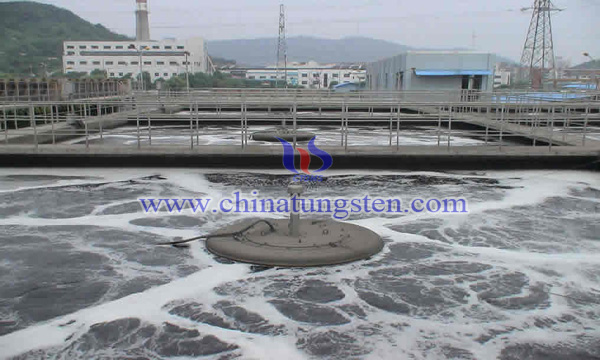Photocatalytic Activity of Silica/Bismuth Tungstate on Methylene Blue
- Details
- Category: Tungsten Information
- Published on Friday, 08 February 2019 23:29
Among many photocatalytic materials, bismuth tungstate is a kind of visible-light photocatalyst with good photocatalytic activity. Bi2WO6 is a typical semiconductor material. Electrons are stimulated by light and leave corresponding holes to form electron-hole pairs. These photogenerated electron-hole pairs have strong redox ability. They are easy to react with organic substances and polymer, and they respond well to visible light because of their narrow band gap.

However, this also increases the probability of photogenerated electron-hole recombination and reduces the efficiency of photon quantum, thus affecting the photocatalytic performance of Bi2WO6. Therefore, many scholars have devoted themselves to the study of supported Bi2WO6 photocatalysts with high activity, high stability and good recycling performance. For example, researchers have been working on a silica aerogel composite bismuth tungstate photocatalyst, which has excellent adsorption and catalytic capabilities. Its preparation process is as follows:
The two step acid base catalysis method was used to prepare silica aerogels with ethyl orthosilicate as raw material. 20mL tetraethyl orthosilicate (TEOS), 20mL ethanol (ETOH), 8mL water, 7mL N-N two methyl formamide (DMF) were added into the aerogel in sequence. Finally, 10 hydrochloric acid with 10 L was used as catalyst. The temperature is 60 degrees, the gelatinization treatment is carried out in the oil bath environment, the stirring method is selected as magnetic stirring, the stirring speed is 500 revolutions / minutes, the stirring time is 1.5h, the pH value of gelation is 6, the alkali adjusting agent is ammonia water in the gelatinization process, 370mg bismuth tungstate is added before the gel, and stirring for a period of time, waiting for gel and gel to add. When the aging solution is added, the aging solution is ethanol, the aging times are 2 times, and the aging solution is replaced with n-hexane once. Dry at normal pressure and temperature for 2 days. Finally, the photocatalysts were prepared by drying them in oven for 8 hours at 60 ℃, 4 hours at 80 ℃ and 2 hours at 100 ℃.
Some silica aerogel composite bismuth tungstate photocatalyst samples were irradiated with 300W xenon lamp to irradiate 1H. The calculated results showed that the removal rate of methylene blue in methylene blue dye wastewater was 91%. The photocatalytic degradation process showed good physical adsorption ability, mechanical stability and light transmittance, and it could be dried and cleaned by continuous washing after recycling.
- Tungsten Oxide Manufacturer & Supplier, Chinatungsten Online: www.tungsten-oxide.com
- Tungsten News & Prices of China Tungsten Industry Association: www.ctia.com.cn
- Molybdenum News & Price: news.molybdenum.com.cn
- Tel.: 86 592 5129696; Fax: 86 592 5129797; Email: sales@chinatungsten.com



 sales@chinatungsten.com
sales@chinatungsten.com